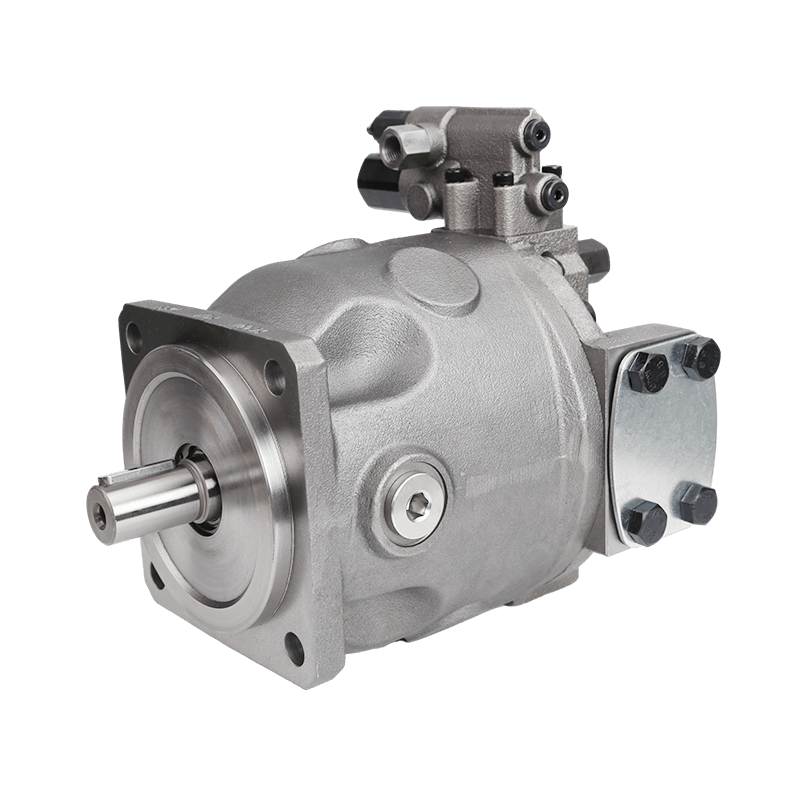Gear pumps are essential components in various industrial applications due to their efficiency and reliability in fluid transfer. Understanding the mechanics behind gear pump working is crucial for effective utilization and maintenance. This article delves into the intricate details of how gear pumps function, their key processes, and the various types available in the market.
Understanding Gear Pump Mechanics
Basic Principles of Gear Pump Working
Gear pumps operate on a simple yet effective principle that utilizes the rotational motion of gears to transfer fluids. These pumps are characterized by their two or more rotating gears that mesh with each other, creating a pressure differential to move the fluid from the inlet to the outlet. The rotation of the gears generates a vacuum at the inlet, allowing fluid to enter the pump and be carried along the gear teeth to the discharge side. This continuous process of fluid movement is efficient and can handle various viscosity levels.
The Role of Gears in Pump Operation
The gears in a gear pump play a vital role in its operation, as they are the primary moving parts responsible for the fluid transport. In a typical gear pump setup, the driving gear is powered by a motor while the driven gear is mechanically linked to it. As the gears rotate, they create pockets of fluid between the gear teeth, which are then moved away from the inlet and towards the outlet. The design and alignment of these gears are crucial, as they determine the pump’s flow rate and pressure capabilities.
Pressure and Flow Dynamics
The dynamics of pressure and flow are integral to the functioning of gear pumps. The flow generated by the pump is a result of the volume of fluid displaced with each rotation of the gears. As the gears turn, the fluid’s flow rate can be affected by various factors, including the speed of rotation, gear size, and the viscosity of the fluid being pumped. Understanding these dynamics helps operators optimize the pump’s performance and ensure it operates efficiently under varying conditions.
Key Processes in Gear Pump Functionality
Inlet and Outlet Mechanics
Fluid Entry Mechanisms
The mechanism of fluid entry in gear pumps involves the creation of a low-pressure area as the gears rotate. This low-pressure zone allows the fluid to flow into the pump through the inlet port. The design of the inlet port is critical, as it must accommodate the fluid’s flow without causing turbulence or cavitation, which can adversely impact performance.
Discharge Processes
Once the fluid is transported through the gear teeth, it reaches the outlet side, where it is expelled from the pump. The discharge process is influenced by the pressure generated within the pump and the design of the discharge port. An efficient discharge mechanism ensures that the fluid is expelled smoothly and quickly, allowing for continuous operation without pressure build-up that could lead to damage.
Seal and Leak Prevention Systems
Importance of Seals
Seals are essential in gear pumps to prevent leaks and maintain system integrity. Proper sealing ensures that the pressurized fluid does not escape from the pump, which can lead to performance issues and potential safety hazards. Effective seals also contribute to the longevity of the pump by minimizing wear and tear on the internal components.
Types of Seal Mechanisms
Several sealing mechanisms are used in gear pumps, including lip seals, O-rings, and mechanical seals. Each type of seal serves to mitigate leakage while ensuring that the pump operates effectively. The choice of sealing mechanism depends on factors such as temperature, pressure, and the nature of the fluid being handled.
Heat Management in Gear Pumps
Heat management is a critical aspect of gear pump functionality, as excess heat can lead to reduced efficiency and premature failure. As the gears rotate, friction can generate heat, potentially affecting the fluid’s viscosity and the overall performance of the pump. To manage heat, many gear pumps are designed with thermal expansion considerations and may incorporate cooling systems to maintain optimal operating temperatures.
Types of Gear Pumps
External Gear Pumps
Design and Structure
External gear pumps consist of two gears that are mounted externally and are commonly used in various applications due to their reliability. The gears are typically enclosed in a casing that facilitates fluid movement while allowing for easy disassembly and maintenance. This design is particularly advantageous for handling larger volumes of fluids.
Typical Applications
External gear pumps are widely utilized in hydraulic systems, lubrication systems, and chemical processing industries, where they effectively handle the transfer of oil, resins, and other fluids. Their robust design makes them suitable for applications that require consistent performance under varying conditions.
Internal Gear Pumps
Functional Characteristics
Internal gear pumps use one gear that is situated inside another, offering a different mechanism for fluid movement. This design produces a unique flow pattern that can be beneficial for certain applications, such as pumping viscous fluids. The internal arrangement allows for smoother operation and reduced turbulence, enhancing performance.
Performance Advantages
The performance advantages of internal gear pumps include their ability to handle high-viscosity fluids and create a more uniform flow rate. They also tend to generate less noise during operation, making them suitable for applications where noise reduction is a priority. Furthermore, their design minimizes shear stress on the fluid, preserving its properties during transfer.
Practical Applications of Gear Pumps
Industrial Uses
Manufacturing
In the manufacturing sector, gear pumps are leveraged for their ability to provide precise fluid transfer and consistent flow rates. They are commonly used for materials such as paints, inks, and adhesives, where controlled viscosity and accurate pumping are critical for product quality.
Chemical Processing
Gear pumps play a vital role in chemical processing applications, where they handle various chemicals and solvents. Their ability to manage different viscosities and pressures makes them ideal for tasks such as transferring corrosive liquids without compromising safety or efficiency.
Automotive Uses
Fuel Systems
In automotive applications, gear pumps are essential for fuel delivery systems. They provide reliable transportation of fuel from the tank to the engine, ensuring efficient combustion and optimal performance of vehicles. Their ability to operate under high pressures makes them suitable for a variety of fuel types, including gasoline and diesel.
Lubrication Circuits
Gear pumps are also used in automotive lubrication circuits to maintain proper oil flow throughout the engine. By ensuring a consistent supply of lubrication to moving parts, these pumps help reduce friction and wear, promoting the longevity of the vehicle.
Other Significant Applications
Beyond manufacturing and automotive uses, gear pumps find applications in various sectors, including food processing, pharmaceuticals, and municipal water systems. Their versatility and reliability make them integral components for transferring fluids in diverse environments, enhancing operational efficiency and safety.
Advantages and Limitations of Gear Pumps
Strengths of Gear Pump Technology
Gear pumps are valuable in various industries due to their reliable and consistent fluid transfer, maintaining a constant flow rate regardless of system pressure. This reliability is crucial for precise fluid control in manufacturing and fuel delivery. They handle a wide range of fluid viscosities, making them versatile.
Their simple design results in lower maintenance costs and easy repairs, with fewer components prone to failure, increasing equipment longevity. Gear pumps operate quietly, reducing noise levels, and their robust construction withstands high pressures and demanding conditions, enhancing efficiency and durability.
Common Challenges and Solutions
Gear pumps have advantages but also face challenges. Cavitation, where vapor bubbles form and collapse, can cause noise and damage. Proper inlet conditions and suitable inlet size can minimize this risk. Maintaining appropriate fluid velocity at the inlet ensures stable operation.
Wear and tear of internal components, especially with abrasive or corrosive fluids, is another issue. This reduces efficiency and increases maintenance. Using corrosion and wear-resistant materials and regular maintenance, like inspecting and replacing worn parts, can extend the pump’s lifespan and maintain reliability.
Poocca’s Innovative Gear Pump Solutions
Poocca’s Product Range Overview
Poocca offers a diverse range of gear pumps designed to cater to specific industrial needs. From external gear pumps that excel in high-flow applications to internal gear pumps that are particularly effective for pumping viscous fluids, Poocca ensures that there is a suitable solution for every operational requirement. Each product is engineered with precision to ensure optimal performance, reliability, and safety in the most demanding environments.
In addition to the standard offerings, Poocca has developed specialized gear pumps equipped with unique features tailored to enhance their functionality. This range includes pumps that are designed for chemical processing, food-grade applications, and even pumps suitable for high-temperature or high-pressure scenarios. The flexibility in product design is a testament to Poocca’s commitment to innovative engineering, aimed at bolstering efficiency and performance in various industrial applications.
Cutting-Edge Features in Poocca’s Gear Pumps
Poocca’s gear pumps feature advanced sealing systems that reduce leak risks and maintain effectiveness under extreme conditions, ensuring safety and reliability. They also use smart monitoring technology for real-time performance tracking, predicting maintenance needs, and enhancing efficiency. Energy-efficient designs lower operational costs and minimize environmental impact. User-friendly features like quick disassembly simplify maintenance, supporting high uptime and productivity.
Maintenance Tips for Optimal Performance
Routine Inspection Guidelines
To ensure the optimal performance of gear pumps, routine inspections are vital. Regular checks should focus on the alignment and condition of the gears, as misalignment can lead to operational inefficiencies and premature wear. Inspecting the seals and gaskets for signs of wear or leakage is equally important, as damaged seals can lead to fluid loss and reduced pressure.
The performance monitoring of the pump is also key to maintenance. Operators should routinely log flow rates, input/output pressures, and temperatures to identify any trends that might indicate emerging problems. Implementing a scheduled maintenance program that includes these inspections can significantly prolong the operational life of the gear pump and prevent unexpected breakdowns.
Troubleshooting Common Issues
When issues arise in gear pump operation, prompt troubleshooting is crucial to mitigate damage. One common problem is inconsistent flow rates, which may signal clogging, air intrusion, or gear damage. In such cases, operators should first inspect the inlet for obstructions and ensure that the pump is primed correctly to maintain uninterrupted fluid flow.
Another issue could be excessive noise during operation, often indicative of mechanical wear or insufficient lubrication. In this situation, operators should examine the pump components for signs of wear and verify that lubrication levels are appropriate. Addressing these common issues in a timely manner is essential for maintaining the efficiency and longevity of gear pumps, ensuring they continue to perform effectively in their intended applications.










